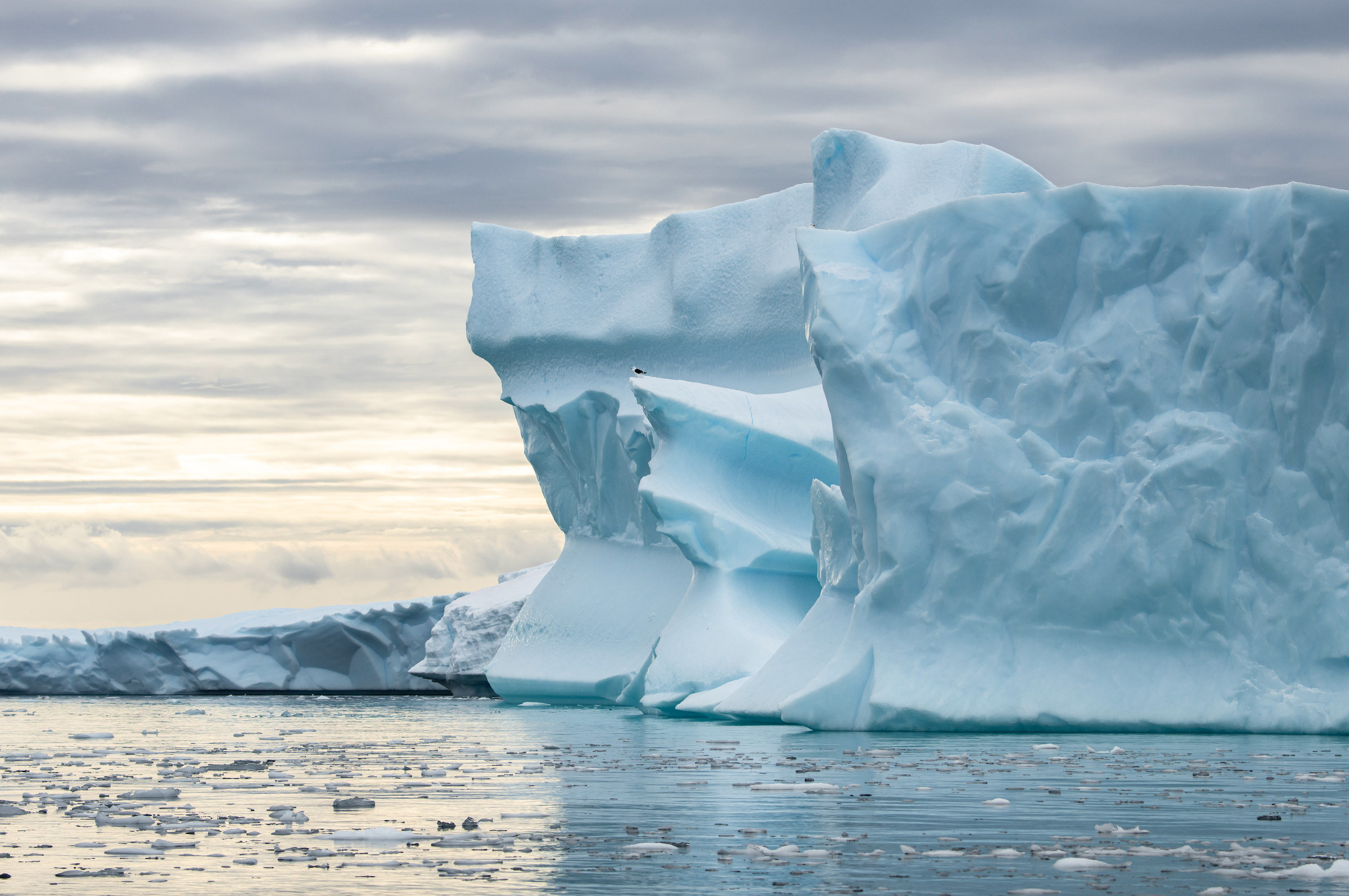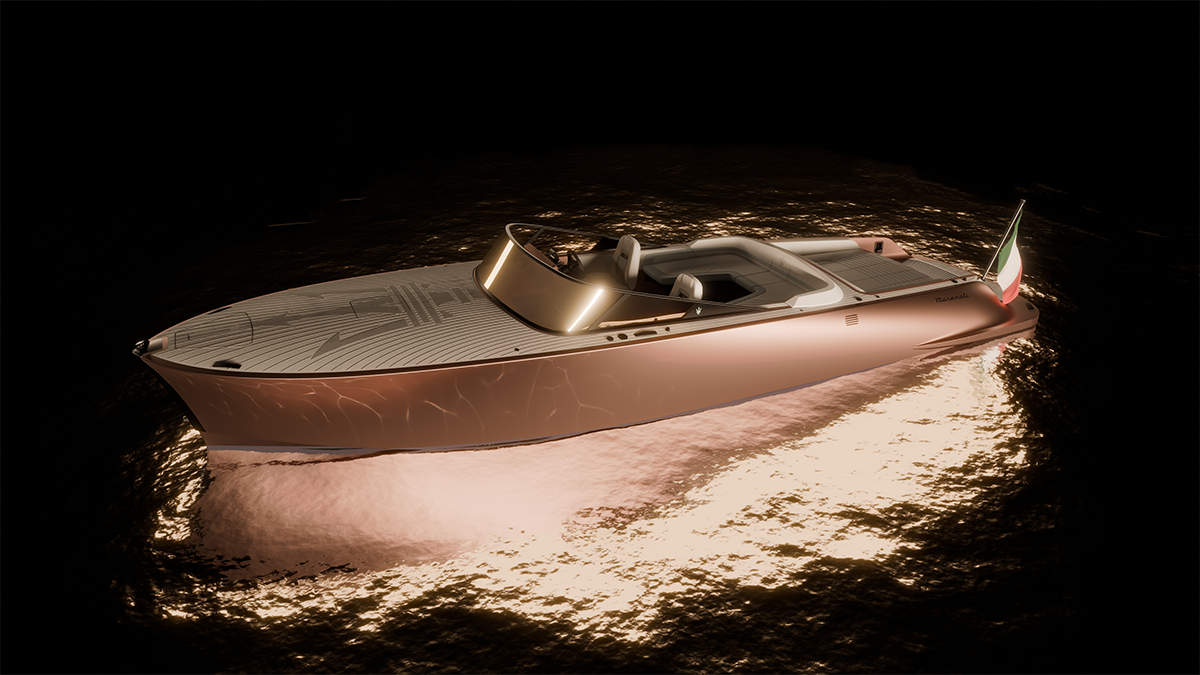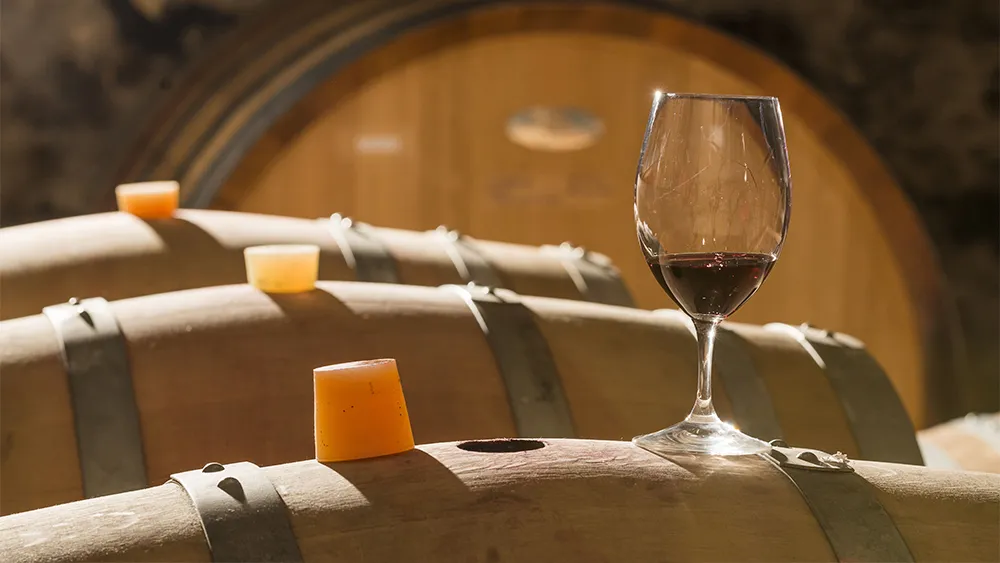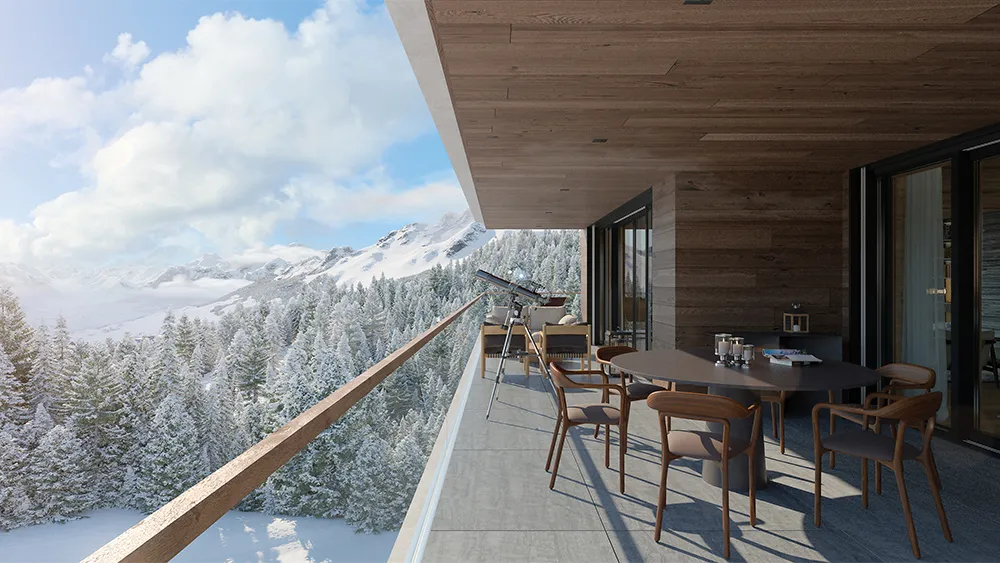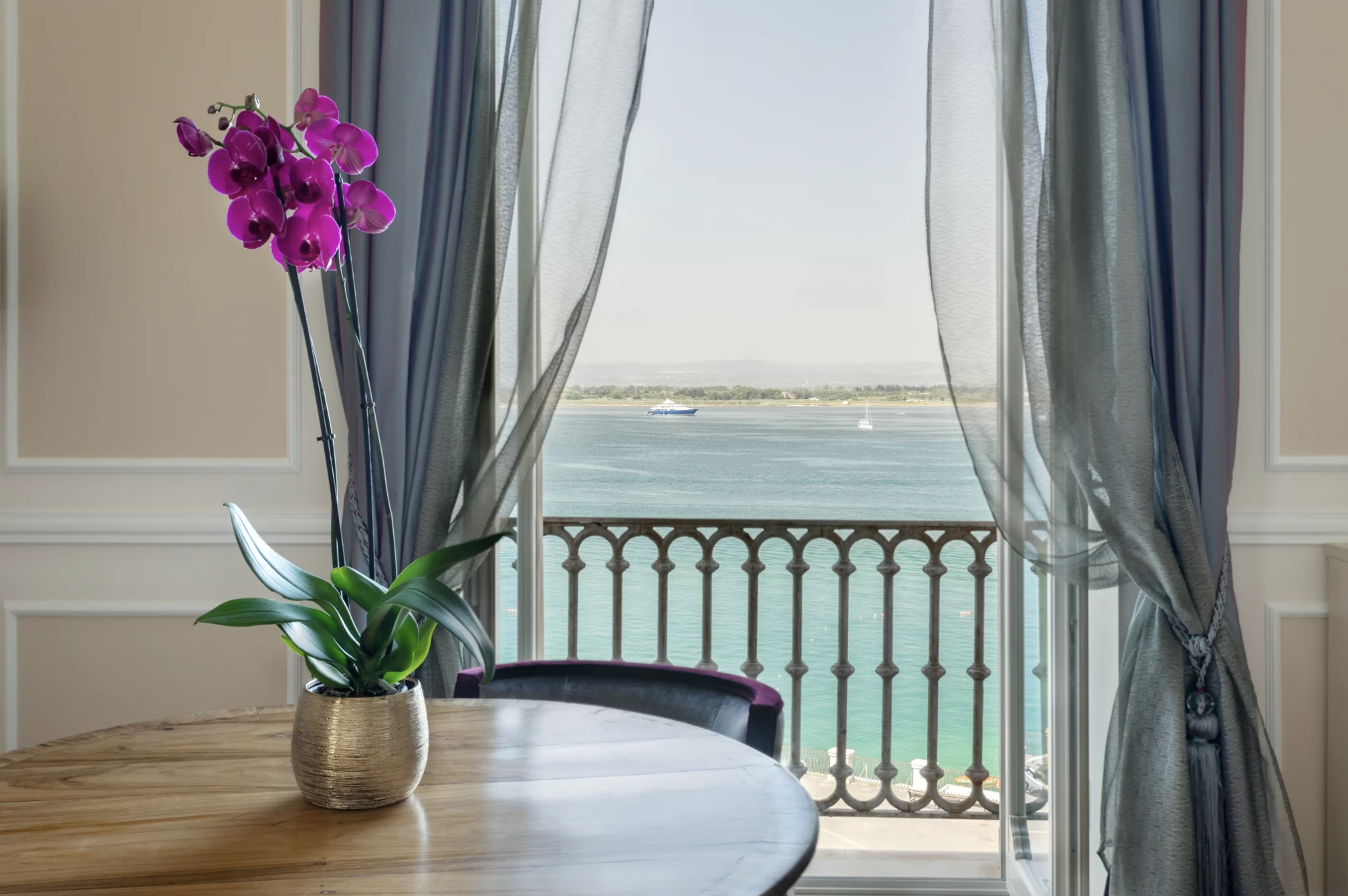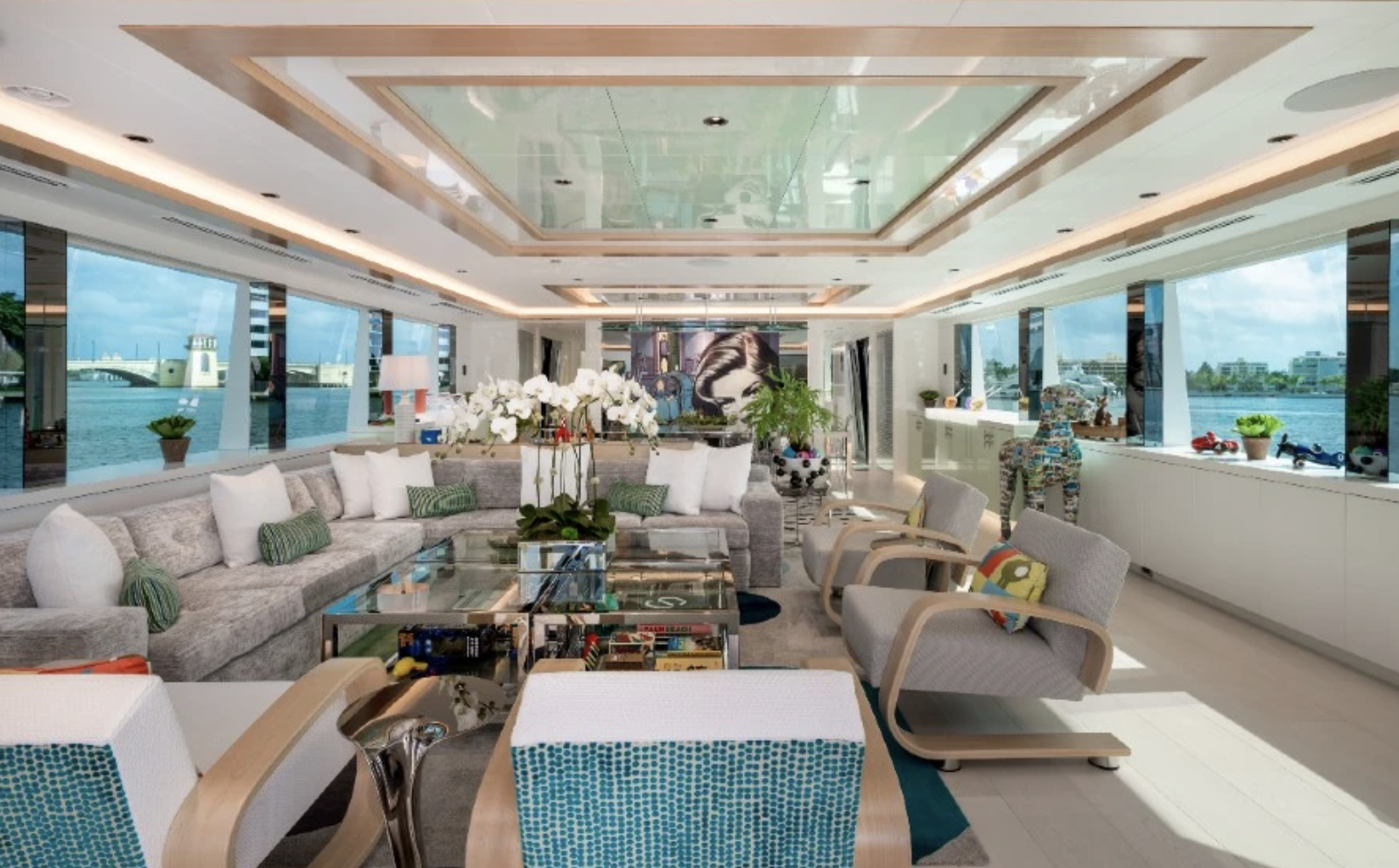
Superyacht Interiors Are Going Vegan. Here’s Why.
Sustainability is starting, but vegan leathers, engineered hardwoods and stones have to convince owners before yachting really turns green.
Related articles
“Vegan” is not necessarily a word you’d connect with luxury yacht interiors, but Westport designer Sylvia Bolton is seeing more interest. For Bolton, the meaning of vegan has changed dramatically from her first design 15 years ago when the yacht’s owners, who held their African safaris dear to their hearts, had asked the designer to cover the interior and pilothouse in tribal artifacts and animal pelts, including leopard-skin and zebra-print rugs, to give a realistic African sensibility.
“Everything was artificial,” Bolton told Robb Report, “though the animal skins looked so real they startled the guests.”
The second more recent yacht, tintin, was an entirely different concept. It has a whimsical interior, complete with a life-sized papier mache Great Dane, with plenty of bright colors and big surprises—including the character Stewie from Family Guy, peeking out of the visor of a full-sized set of knight’s armor on the deck below. The only sign of animal tracks are the big, stylized paw prints Bolton designed into a custom rug under the dining table. There’s no leather, fur or other animal byproducts. “The owners are big animal-rights’ activists,” says Bolton.

A craftsman at Crystal Caviar working on a crystal structure for a yacht using recycled materials. Courtesy Crystal Caviar
These two vegan bookends are a rarity in yacht design, of course, and while vegan is generally a moral or political choice, using synthetics or natural materials like vegan leather brings up a larger debate about the lack of sustainable materials in yacht design. The problem, say the designers and shipyards, is that sustainable, engineered materials are generally seen as “cheap” compared to natural leathers, stones and woods.
“At the end of the day, these owners can buy anything and their yachts are statements of the pinnacle of their lives,” says designer Gregory C. Marshall. “I think the key will eventually be to get them to look at materials differently—to get away from the ‘classic equals luxury’ definition. There are some really interesting materials emerging that are sustainable and attractive.”
One includes crystal chandeliers of completely recycled materials. Marek Landa, founder of Crystal Caviar, said the owner of a 340-foot-plus superyacht asked for him to used recycled glass in what turned out to be the show-stopping chandelier in the yacht’s dining room. “In sculptures, the materials often consist of up to 30-percent recycled glass,” says Landa. “In this, we were able recycle leftover crystal rods from previous projects, crush them into crystal nuggets and use them in this unique new chandelier.”

The fashion industry is far ahead of yachting when it comes to vegan leather. Here are recent handbags by American designer Telfar Clemens in London. Courtesy AP
Mark Boddington, the founder of Silverlining, specializes in bespoke furniture for residences, yachts and jets. He has found a use for repurposed woods, including 2500-year-old bog oak, that now are considered museum-quality chairs and tables. “We’ve been inspired by perceived waste materials and seeing how we can transform them into what we call neo-luxury finishes,” says Boddington.
“Sustainable, non-toxic materials from surface fabrics, vegan leathers, seaweed, reclaimed and organic-based materials are becoming more common from traditional suppliers,” adds Alex Mcdiarmid of Mcdiarmid Design.
Bioblu CEO Paolo Bonaveri says his company sources “vegan leathers made from natural substances like apples and grape skin, or for more exotic feelings, from pineapple and cactus,” for superyacht interiors. This nature-inspired, “biophilic” design is a trend the materials industry is pushing twofold, both within residential interior design and with products focusing on nature and wellness.

Ethereal Blooms has a way to “bio-preserve” flowers so they stay fresh for 12 months. Courtesy Ethereal Blooms
The fast-growing field of vegan leather is seeing its greatest adoption in fashion among high-end designers like Stella McCartney. Shoes, purses, and other vegan leather-based items are also moving from high design to mainstream retail, with chains like H&M selling mushroom-vegan leather shoes. “I’ve seen some excellent leathers from mushrooms,” adds yacht designer Marshall.
Other designers like Bernardo Zuccon from Zuccon International in Rome are experimenting with fabrics that come from recycled plastics. “We’re starting to propose these materials to our customers, even if they aren’t easy to associate with luxury and wealth,” says Zuccon. “Right now, the percentage of customers interested in these materials is low, though we can see a progressive growth.” The good news, he adds, is that these recycled materials are becoming readily available.
“We’re doing research on composite materials from recycled plastics to make the entire structure sustainable and not just the surface,” adds Francesca Burdisso of Burdisso & Capponi Yacht & Design.

An artist from Crystal Caviar in front of a recent sculpture using recycled glass. Courtesy Caviar Crystal
Other luxury materials, like manufactured marble and teak that employ waste byproducts, are as aesthetically pleasing as the natural forms of the materials, and in some cases, more effective than the originals. Bolton says that engineered flooring and walls developed for high-end hotels and residences are just as attractive and more functional than single pieces of lumber. “These new materials don’t dry and crack like pure wood and they also have anti-flammability properties built into them,” she says. “We just need time to make sure they work well on the constantly changing and often distressed environment that we call a yacht.”
While fresh-flower arrangements are typically used for luxe finishing touches, most have not-so-rosy sustainability credentials. Ethereal Blooms, a London-based floral laboratory, offers 100 percent fresh flowers teamed with the latest biotechnology to create a sustainable on board solution. Its flowers are “bio-preserved” to last up to 12 months in their natural states in the vases.
“Flowers are considered an add-on, but they’re something most yachts replace weekly, much more than other items onboard,” says Joanna Hirst, the company’s yachting specialist. “Using preserved floral arrangements reduces your environmental impact.” At least with the flowers.

No animals used in the making of this interior: The superyacht tintin has no leather or other animal-based materials. The only animal references are the papier-mache, cartoon-like Great Dane (left) and the stylised paw prints in the carpet under the dining table. Courtesy Fraser Yachts
Floral arrangements may not make a yacht green, but it is the start of a larger movement that will include hull design and propulsion, as well as the adoption of emerging sustainable materials that can replace non-sustainable woods, stones and leather.
“We need to change the idea that luxury means only natural woods, leathers or marble,” says Tankoa Yachts CEO Vincenzo Poerio. “Once the quality is there and scales of efficiency drive the costs down, it will be a matter of marketing.”
Subscribe to the Newsletter
Recommended for you
Polar Opposites
A journey north to one of the harshest, remotest spots on Earth couldn’t be more luxurious.
April 18, 2024
Maserati Just Unveiled a New All-Electric Powerboat to Match the Folgore EV
The new Tridente can churn out 600 horses and hit 40 knots at full tilt.
April 18, 2024
You may also like.
You may also like.
Minerality in Wine, Explained: How It Affects Taste, Aroma and Texture
And an exploration of the regions that produce great mineral-driven varietals.
If you have taken part in a wine tasting, read an article about wine, or even glanced at the back label of a bottle of wine, you have likely encountered the word minerality. But defining what that means exactly is where the problems can start—even wine experts disagree on what it is and how it expresses itself in the glass.
Minerality refers to a flavour profile and often a palpable sensation in the mouth. The flavours generally involve rocks or fossils, such as stone, river rock, flint, gravel, slate, asphalt and oyster shell. There is also a sense of salinity, often derived from volcanic soils, that is a component of mineral-driven wines. This is different from other earthy flavours such as forest floor or peat. When we host tastings, very few people will own up to having licked rocks as a child, but almost everyone has gotten a stray bit of oyster or clam shell in their mouth and can recall the taste and texture. Most of us can remember the scent of a chalkboard or pencil lead from our childhood, and even those who have never fired a gun are familiar with flint or gunpowder from firecrackers.
When minerality is discussed, it is often a quality ascribed to white wine such as Riesling, Assyrtiko, Sauvignon Blanc or Burgundian Chardonnay. We may not hear about minerality in red wine so much because the oak used for maturation may mask the flavours and aromas associated with minerality. However, two reds sometimes described as having mineral qualities are those from the volcanic soils of Mount Etna in Sicily and the shale and quartz vineyards of Priorat in Spain. A prime example of the mineral-driven style is Chablis in the northernmost reaches of Burgundy, whose wines are made with 100 percent Chardonnay. The wines have a distinctly different character than the oaky, buttery style prevalent in Napa Valley and further south in Burgundy.
Walking through the vineyards of Chablis you can see abundant fossilised oyster shells that date back 150 million years to the Upper Jurassic period, when this area was at the bottom of the sea. Dig a bit; you will find calcified ammonites and spiral-shaped cephalopods from the same era. While vineyard soil is a discussion for another day, the grey limestone here is called Kimmeridgian, named for the village of Kimmeridge in Dorset, England, where it was first identified. As Thierry Bellicaud, president of Domaine Laroche in Chablis told Robb Report, “The Kimmeridgian limestone soil, which is unique to this area, delivers all needed nutrients for the balance of the vines. The terroir nurtures the vines which then express its personality in the grapes.”
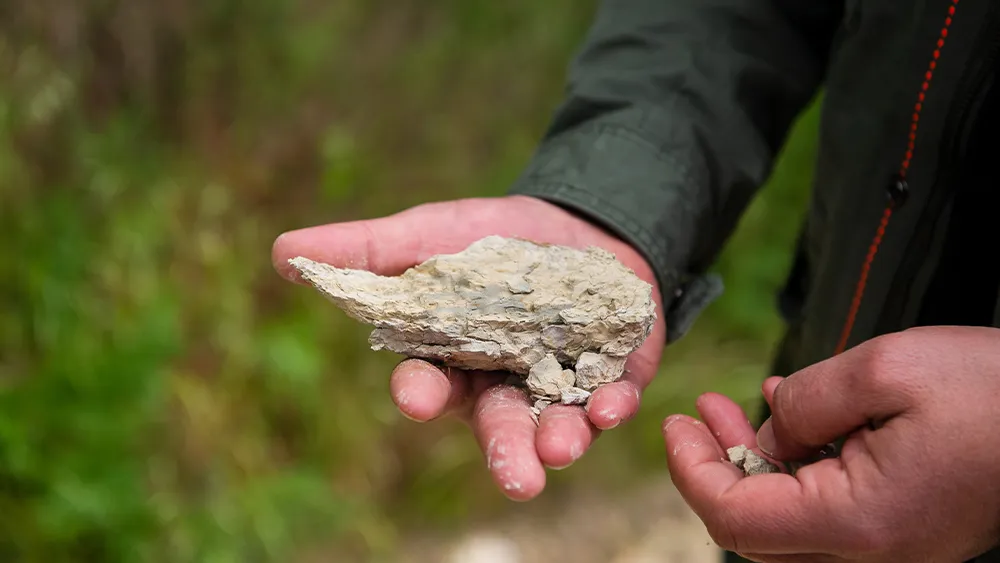
DOMAINE LAROCHE, CHABLIS, FRANCE
Asked how soil composition influences one of Domaine Laroche’s wines, Bellicaud referenced its Chablis Grand Cru Les Blanchots, “Les Blanchots is a unique terroir made of a layer of white clay on Kimmeridgian limestone with ammonites. This is the ideal combination to keep the right amount of water for the roots. The southeast exposure allows slow ripening and favours aroma development. It is one of the areas in the appellation where you can easily find oyster fossils (called Exogyra virgula). The Grand Cru Les Blanchots is delicate, refined and silky in texture.”
Assyrtiko from Santorini is almost always described as possessing a mineral quality as well as a touch of salinity, which can be attributed to the black volcanic soil in which it grows as well as to the Aegean Seaspray that wafts over the island’s vineyards. Mosel Valley Riesling’s leanness and flinty character come from the red and blue limestone in which it is cultivated.
Italy’s Soave region is also known for the minerality of its wine. Alessio Inama, third-generation family leader and director of sales, marketing and communication at Inama Azienda Agricola, told Robb Report, “Soave Classico is a volcanic region with soil made up of basaltic rocks, volcanic tuffs and ashes that date back 30 million years. The soils offer minerals in their natural form, which impact the composition of the plants themselves. In the case of grape vines, the soils have a major influence on the resulting flavours of the wines, which are mineral and floral.”
Known for their scrupulous mapping of micro-plots within their vineyards, the Inamas produce several different Soave wines made with the Garganega grape. Inama I Palchi Foscarino Grande Cuvée Soave DOC is crafted from the family’s best plots on Monte Foscarino. Inama explained, “The soil of Foscarino is a mix of pure magma, ashes and basaltic rocks that deteriorated over millions of years into a dark clay that is extremely rich in minerals. The grapes from those 40-year-old vines have strong personality, great intensity and texture, delivering a complex bouquet of white flowers, citrus notes and flinty sensations.”
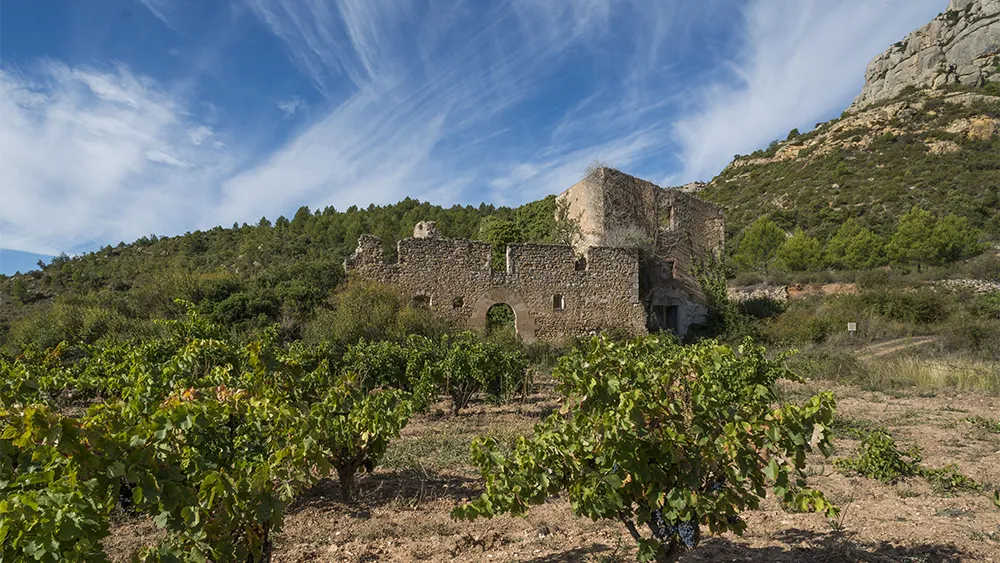
SCALA DEI, PRIORAT, SPAIN
While the sensation of minerality can be less obvious in red wines, Spanish Garnacha and Sicilian Nerello Mascalese are two grapes that often exhibit it, thanks to both the locales from which they hail as well as the often-judicious use of oak. The slopes of eastern Sicily’s Mount Etna are covered with volcanic soils composed of pumice, black ash and basalt. Priorat, a region close to Barcelona in northeast Spain, is blessed with black quartz, slate and mica soils called llicorella. Here you will find vineyards covered with small fragments of black and grey striated rock sitting atop blue and red soils embedded with the same.
Ricard Rofes, winemaker at Scala Dei in Priorat, refers to its Mas Deu vineyard as one of the winery’s “jewels.” The origin of Scala Dei Tribut and Masdeu, it sits 800 meters (2,625 feet) above sea level. Rofes told Robb Report, “In this elevated area the clay and limestone soils are ideal for growing Grenache, giving the wine that touch of acidity and freshness that makes it unique. The red-clay soils and the altitude of the vineyards located in the lap of the Sierra de Montsant give it freshness and the llicorella soils impart a genuine imprint. Our wine is the pure expression of the fruit and the terroir with a distinct personality.”
You may also like.
Best of Europe: Six Senses, Switzerland
Mend in the mountains at Crans-Montana.
Wellness pioneer Six Senses made a name for itself with tranquil, mostly tropical destinations. Now, its first alpine hotel recreates that signature mix of sustainable luxury and innovative spa therapeutics in a world-class ski setting.
The ski-in, ski-out location above the gondola of one of Switzerland’s largest winter sports resorts allows guests to schuss from the top of the Plaine Morte glacier to the hotel’s piste-side lounge, where they can swap ski gear for slippers, then head straight to the spa’s bio-hack recovery area to recharge with compression boots, binaural beats and an herb-spiked mocktail. In summer, the region is a golf and hiking hub.
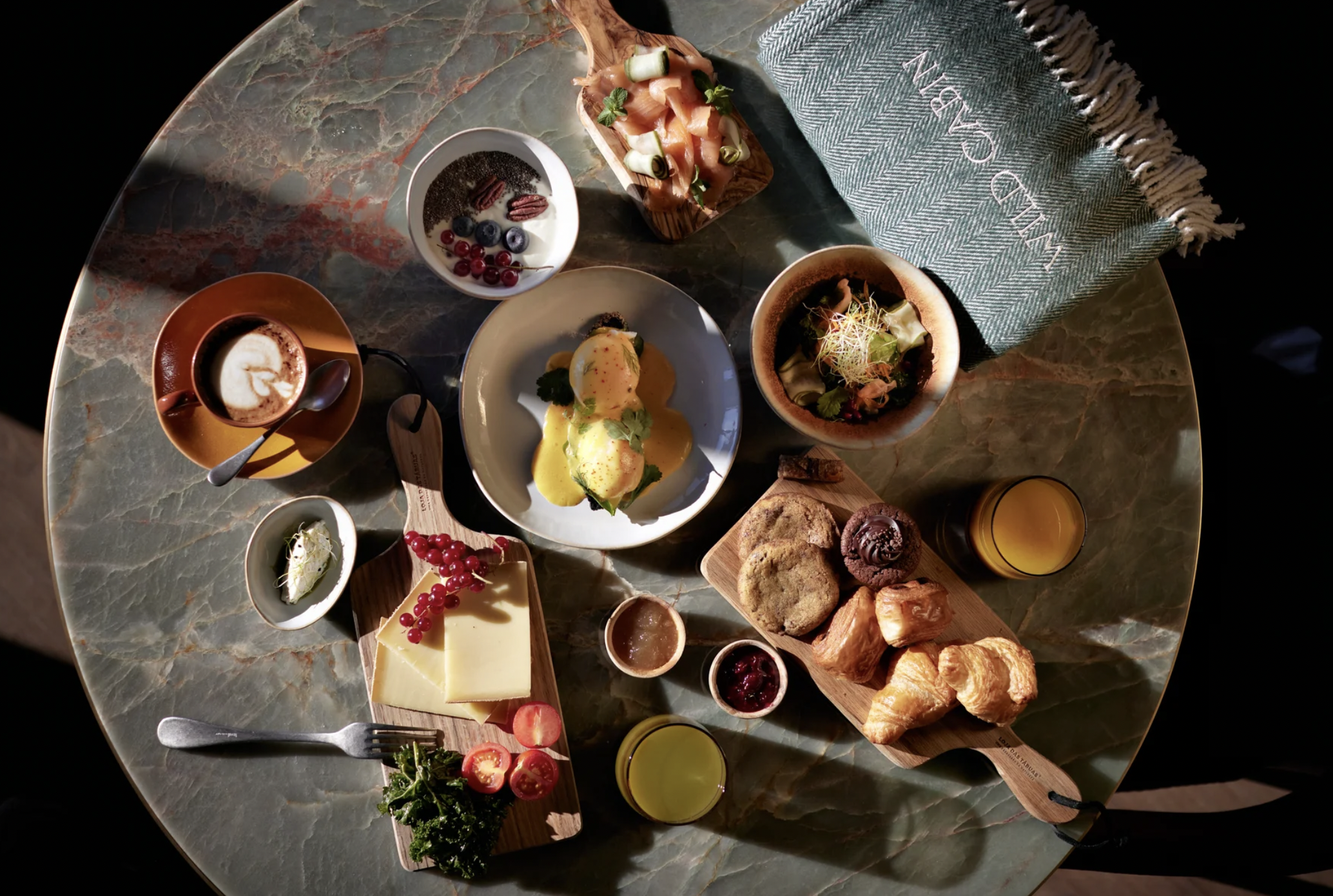
The vibe offers a contemporary take on chalet style. The 78 rooms and suites are decorated in local larch and oak, and all have terraces or balconies with alpine views over the likes of the Matterhorn and Mont Blanc. With four different saunas, a sensory flotation pod, two pools
and a whimsical relaxation area complete with 15,000 hanging “icicles” and views of a birch forest, the spa at Six Senses Crans-Montana makes après ski an afterthought.
You can even sidestep the cheese-heavy cuisine of this region in favour of hot pots and sushi at the property’s Japanese restaurant, Byakko. Doubles from around $1,205; Sixsenses.com
You may also like.
Watch of the Week: TAG Heuer Formula 1 | Kith
The legendary sports watch returns, but with an unexpected twist.
Over the last few years, watch pundits have predicted the return of the eccentric TAG Heuer Formula 1, in some shape or form. It was all but confirmed when TAG Heuer’s heritage director, Nicholas Biebuyck, teased a slew of vintage models on his Instagram account in the aftermath of last year’s Watches & Wonders 2023 in Geneva. And when speaking with Frédéric Arnault at last year’s trade fair, the former CEO asked me directly if the brand were to relaunch its legacy Formula 1 collection, loved by collectors globally, how should they go about it?
My answer to the baited entreaty definitely didn’t mention a collaboration with Ronnie Fieg of Kith, one of the world’s biggest streetwear fashion labels. Still, here we are: the TAG Heuer Formula 1 is officially back and as colourful as ever.
As the watch industry enters its hype era—in recent years, we’ve seen MoonSwatches, Scuba Fifty Fathoms, and John Mayer G-Shocks—the new Formula 1 x Kith collaboration might be the coolest yet.

Here’s the lowdown: overnight, TAG Heuer, together with Kith, took to socials to unveil a special, limited-edition collection of Formula 1 timepieces, inspired by the original collection from the 1980s. There are 10 new watches, all limited, with some designed on a stainless steel bracelet and some on an upgraded rubber strap; both options nod to the originals.
Seven are exclusive to Kith and its global stores (New York, Los Angeles, Miami, Hawaii, Tokyo, Toronto, and Paris, to be specific), and are made in an abundance of colours. Two are exclusive to TAG Heuer; and one is “shared” between TAG Heuer and Kith—this is a highlight of the collection, in our opinion. A faithful play on the original composite quartz watch from 1986, this model, limited to just 1,350 pieces globally, features the classic black bezel with red accents, a stainless steel bracelet, and that creamy eggshell dial, in all of its vintage-inspired glory. There’s no doubt that this particular model will present as pure nostalgia for those old enough to remember when the original TAG Heuer Formula 1 made its debut.

Of course, throughout the collection, Fieg’s design cues are punctuated: the “TAG” is replaced with “Kith,” forming a contentious new brand name for this specific release, as well as Kith’s slogan, “Just Us.”
Collectors and purists alike will appreciate the dedication to the original Formula 1 collection: features like the 35mm Arnite cases—sourced from the original 80s-era supplier—the form hour hand, a triangle with a dot inside at 12 o’clock, indices that alternate every quarter between shields and dots, and a contrasting minuterie, are all welcomed design specs that make this collaboration so great.
Every TAG Heuer Formula 1 | Kith timepiece will be presented in an eye-catching box that complements the fun and colour theme of Formula 1 but drives home the premium status of this collaboration. On that note, at $2,200 a piece, this isn’t exactly an approachable quartz watch but reflects the exclusive nature of Fieg’s Kith brand and the pieces he designs (largely limited-edition).

So, what do we think? It’s important not to understate the significance of the arrival of the TAG Heuer Formula 1 in 1986, in what would prove integral in setting up the brand for success throughout the 90’s—it was the very first watch collection to have “TAG Heuer” branding, after all—but also in helping to establish a new generation of watch consumer. Like Fieg, many millennial enthusiasts will recall their sentimental ties with the Formula 1, often their first timepiece in their horological journey.
This is as faithful of a reissue as we’ll get from TAG Heuer right now, and budding watch fans should be pleased with the result. To TAG Heuer’s credit, a great deal of research has gone into perfecting and replicating this iconic collection’s proportions, materials, and aesthetic for the modern-day consumer. Sure, it would have been nice to see a full lume dial, a distinguishing feature on some of the original pieces—why this wasn’t done is lost on me—and perhaps a more approachable price point, but there’s no doubt these will become an instant hit in the days to come.
—
The TAG Heuer Formula 1 | Kith collection will be available on Friday, May 3rd, exclusively in-store at select TAG Heuer and Kith locations in Miami, and available starting Monday, May 6th, at select TAG Heuer boutiques, all Kith shops, and online at Kith.com. To see the full collection, visit tagheuer.com
You may also like.
Best of Europe: Grand Hotel Des Étrangers
Fall for a Baroque beauty in Syracuse, Italy.
Sicily has seen a White Lotus–fuelled surge in bookings for this summer—a pop-culture fillip to fill up its grandes dames hotels. Skip the gawping crowds at the headline-grabbers, though, and opt instead for an insider-ish alternative: the Grand Hotel des Étrangers, which reopened last summer after a gut renovation.
It sits on the seafront on the tiny island of Ortigia in Syracuse, all cobbled streets and grand buildings, like a Baroque time capsule on Sicily’s southeastern coast.
Survey the entire streetscape here from the all-day rooftop bar-restaurant, Clou, where the fusion menu is a shorthand of Sicily’s pan-Mediterranean history; try the spaghetti with bottarga and wild fennel or the sea bass crusted in anchovies. Idle on the terrace alfresco with a snifter of avola, the rum made nearby.
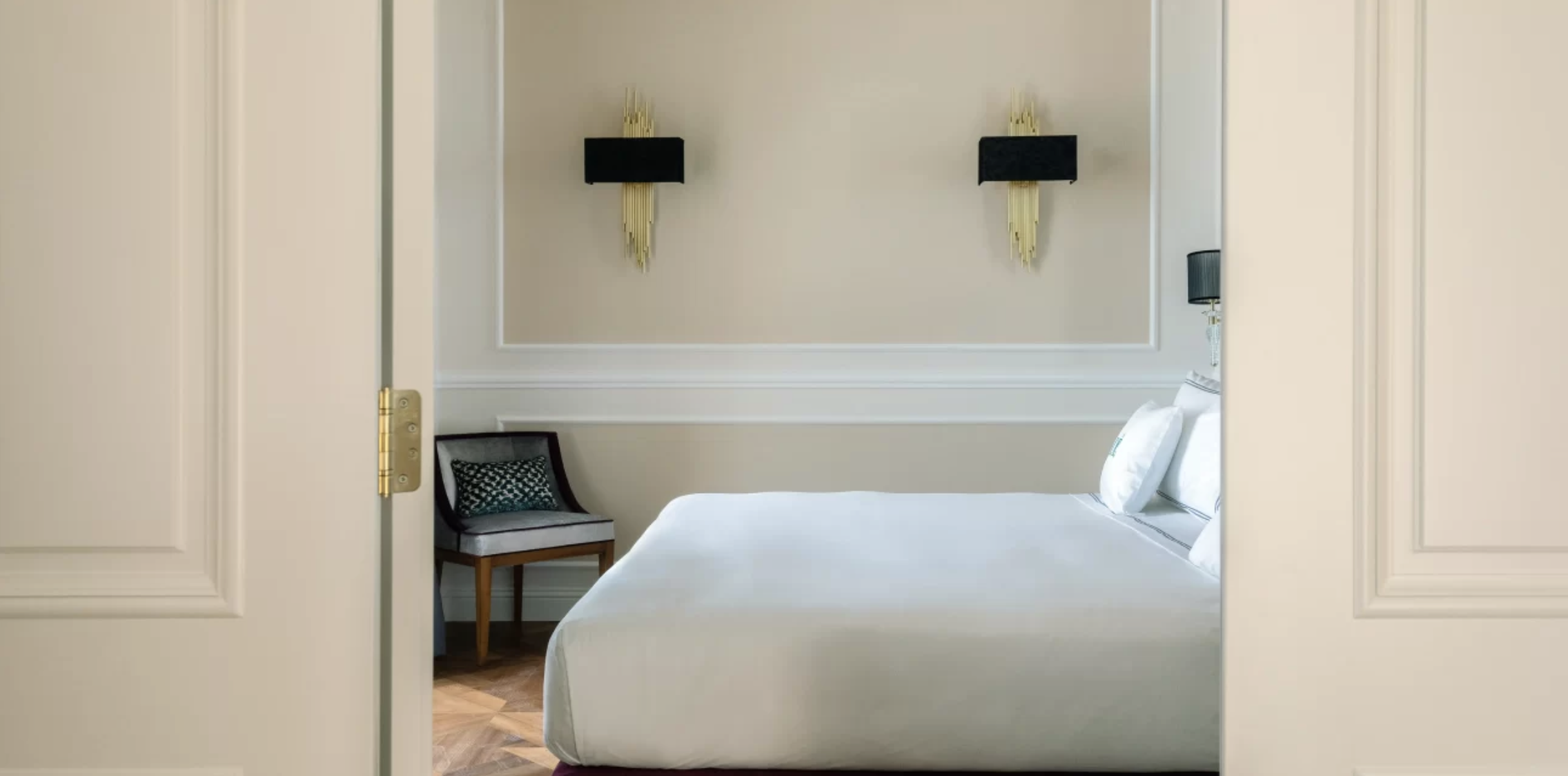
As for the rooms, they’ve been renovated with Art Deco–inflected interiors—think plenty of parquet and marble—but the main asset is their aspect: the best of them have private balconies and a palm tree-fringed view out over the Ionian Sea. Doubles from around $665; desetranger.com
You may also like.
8 Fascinating Facts You Didn’t Know About Aston Martin
The British sports car company is most famous as the vehicle of choice for James Bond, but Aston Martin has an interesting history beyond 007.
Aston Martin will forever be associated with James Bond, ever since everyone’s favourite spy took delivery of his signature silver DB5 in the 1964 film Goldfinger. But there’s a lot more to the history of this famed British sports car brand beyond its association with the fictional British Secret Service agent.
Let’s dive into the long and colourful history of Aston Martin.






